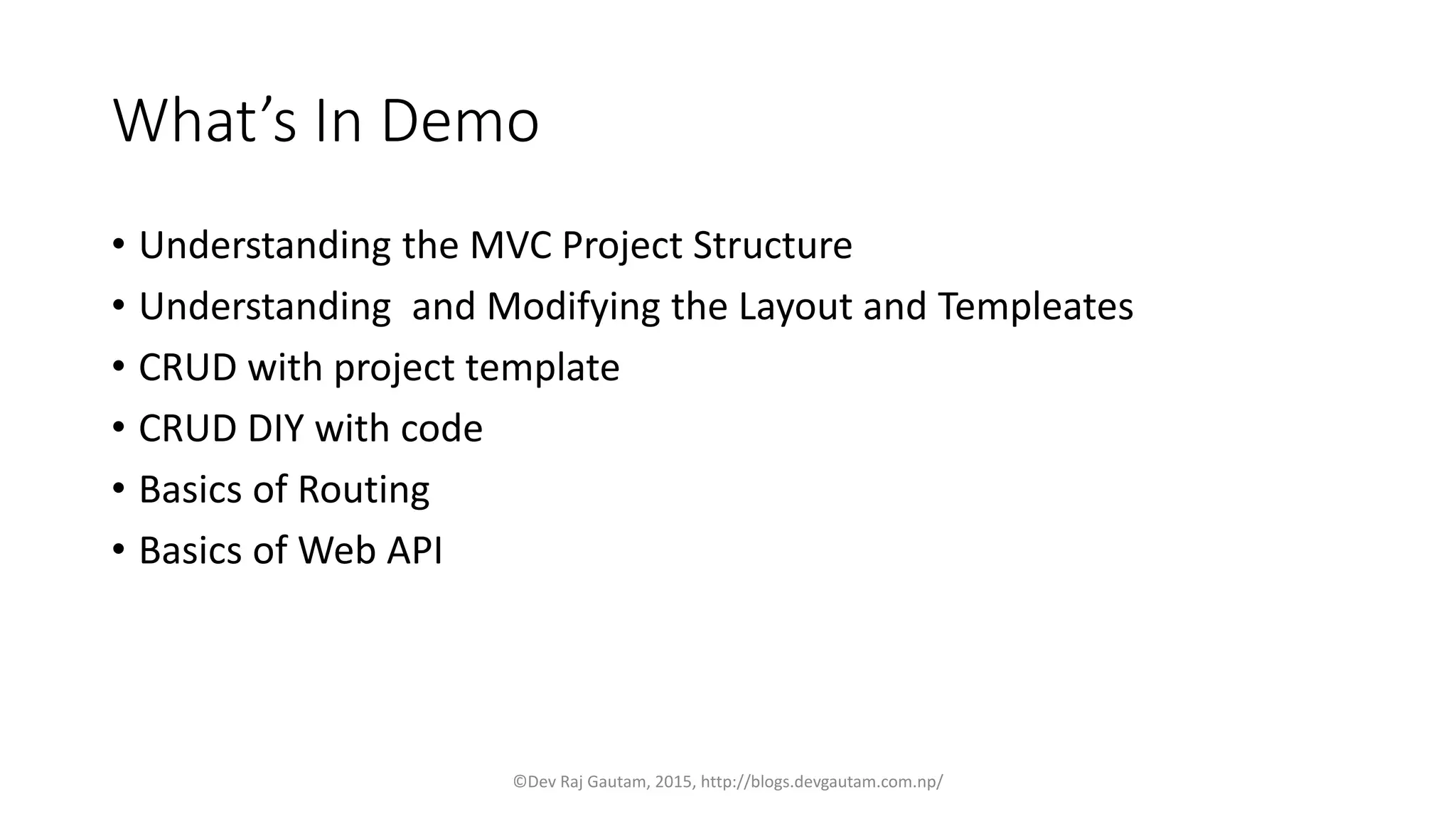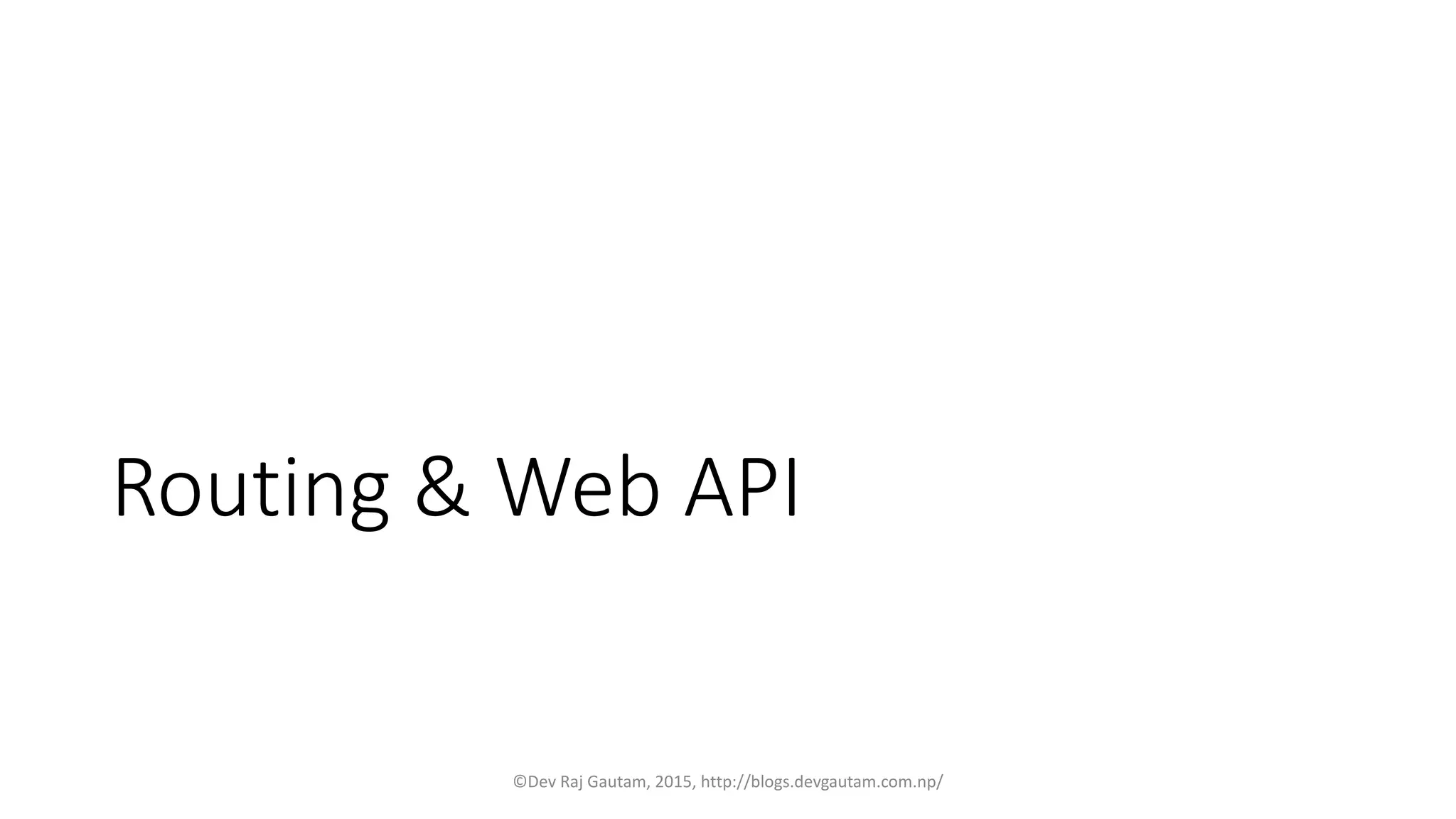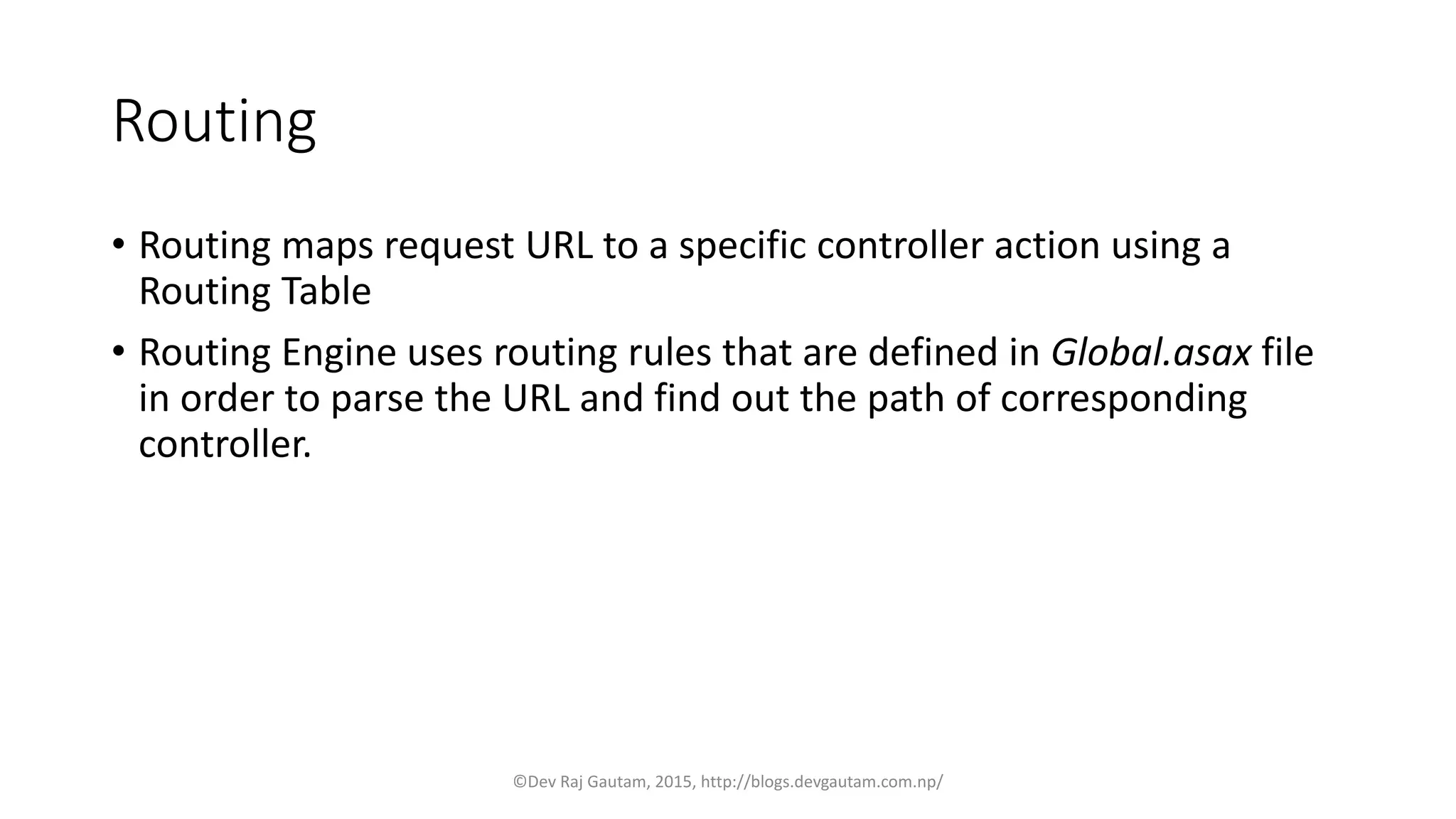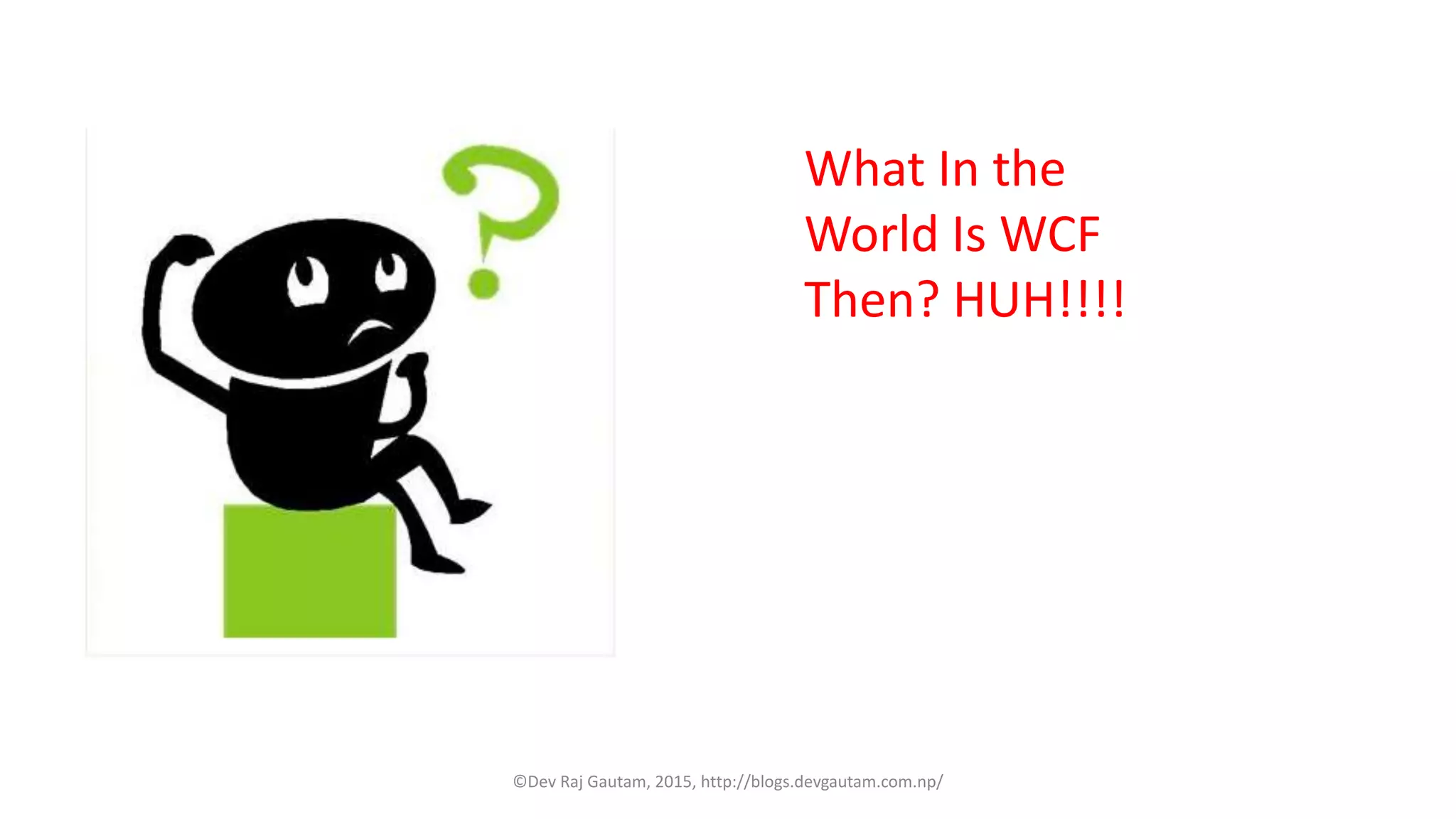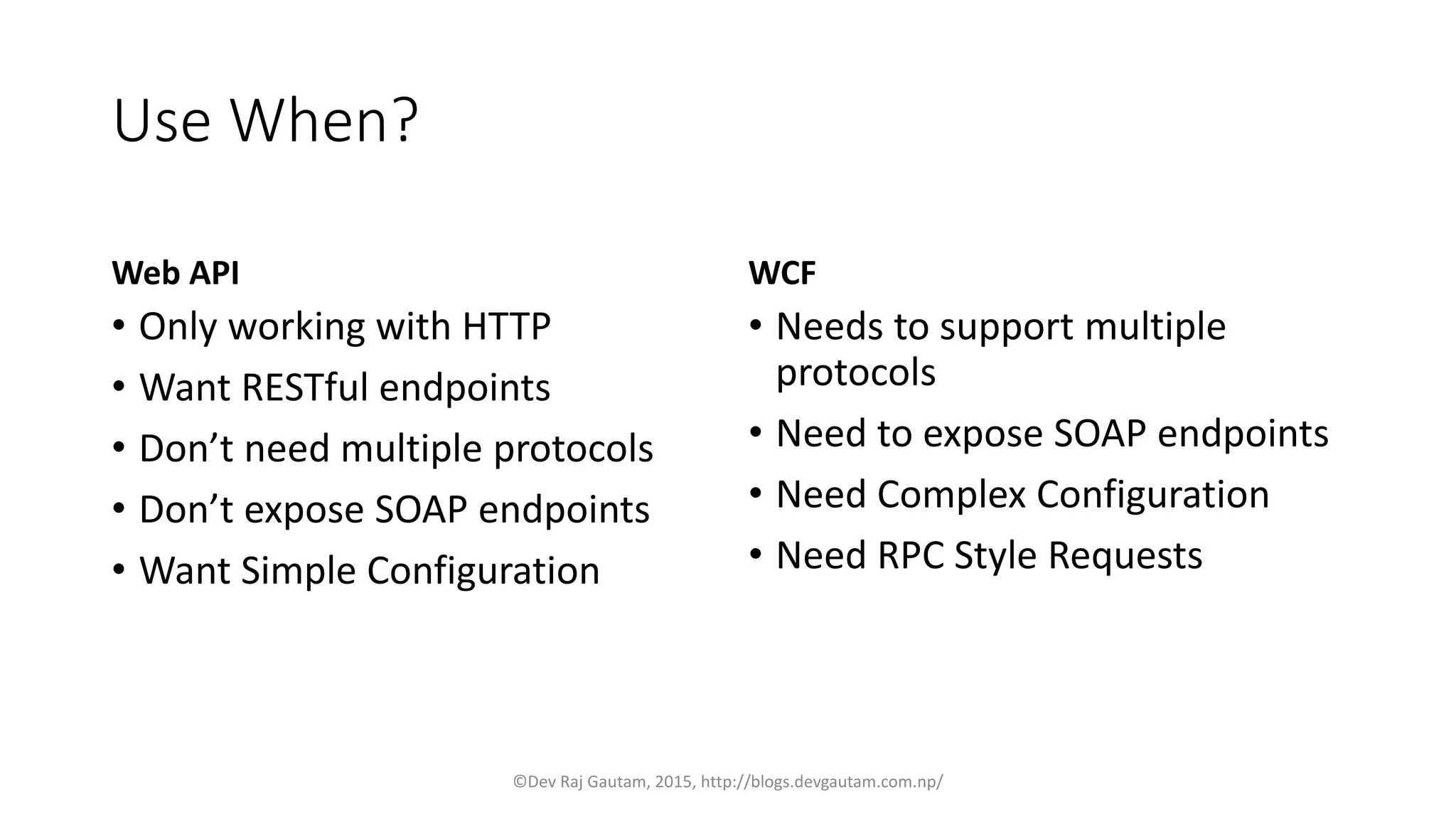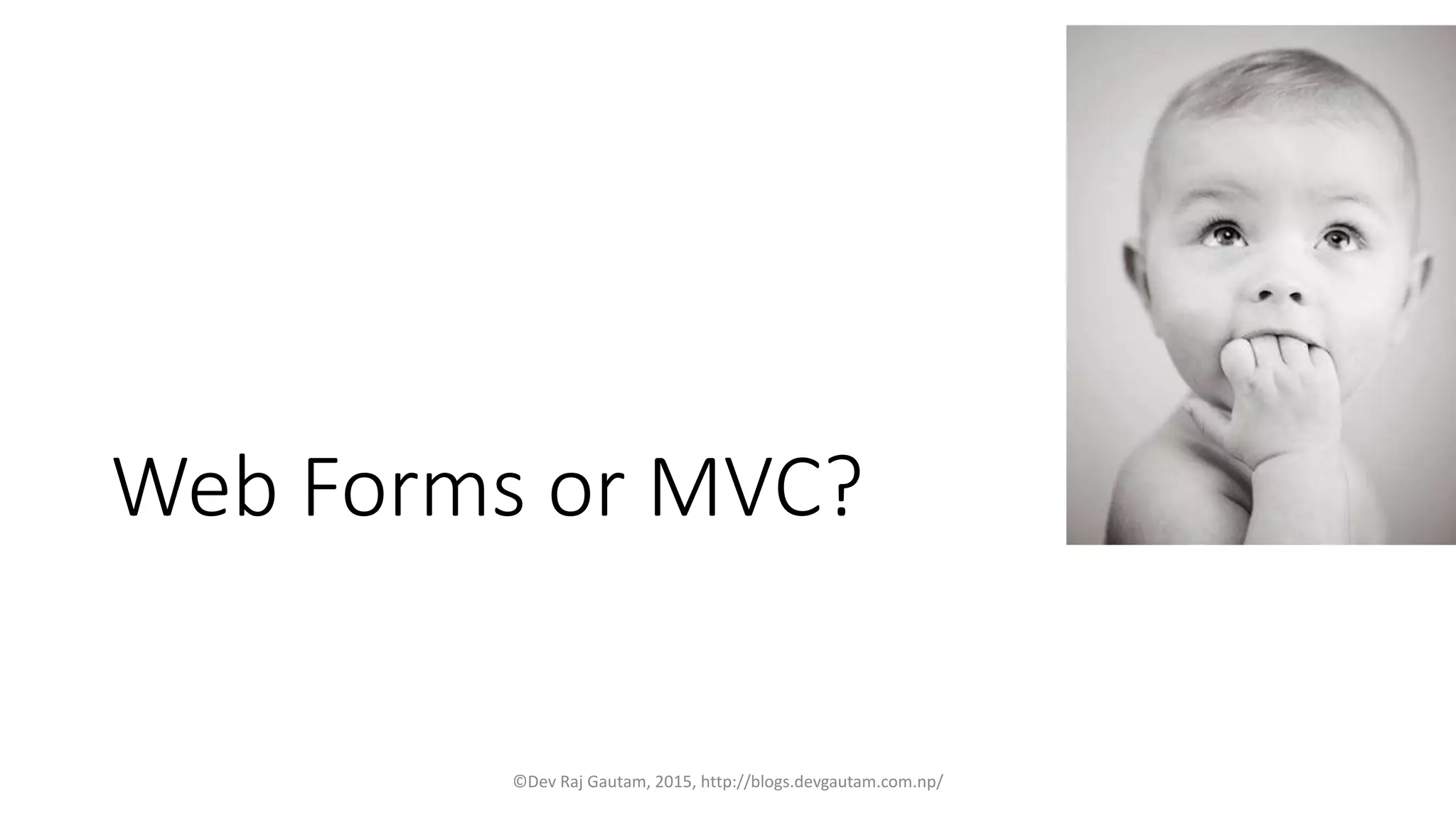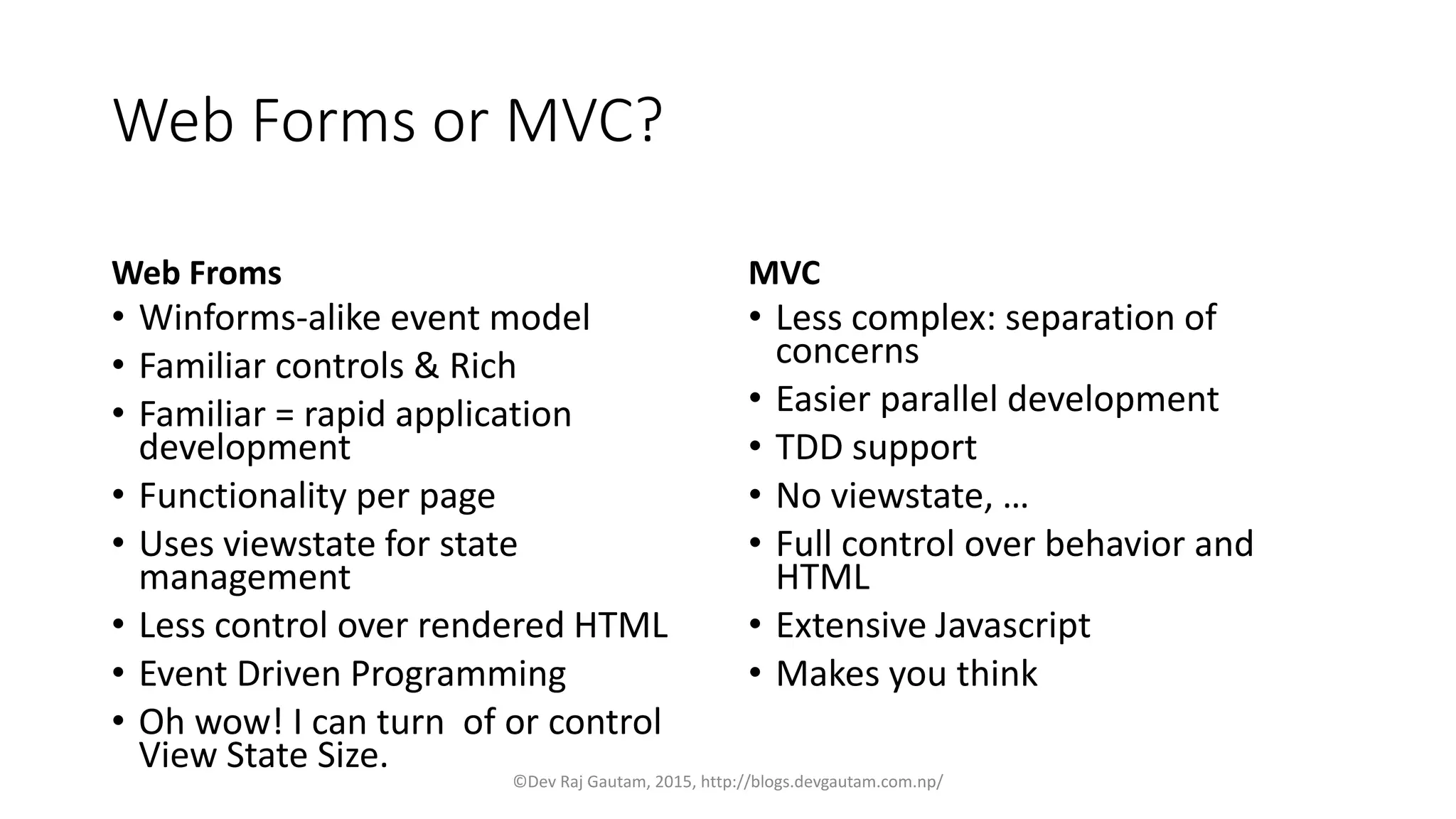The document provides an introduction to ASP.NET MVC and its architectural features, emphasizing the separation of concerns through the model-view-controller design pattern. It discusses the benefits of using MVC over traditional web forms, including improved performance, parallel development, and better control over HTML output. The document also highlights the framework's capabilities, such as easy integration with third-party libraries and testing support.
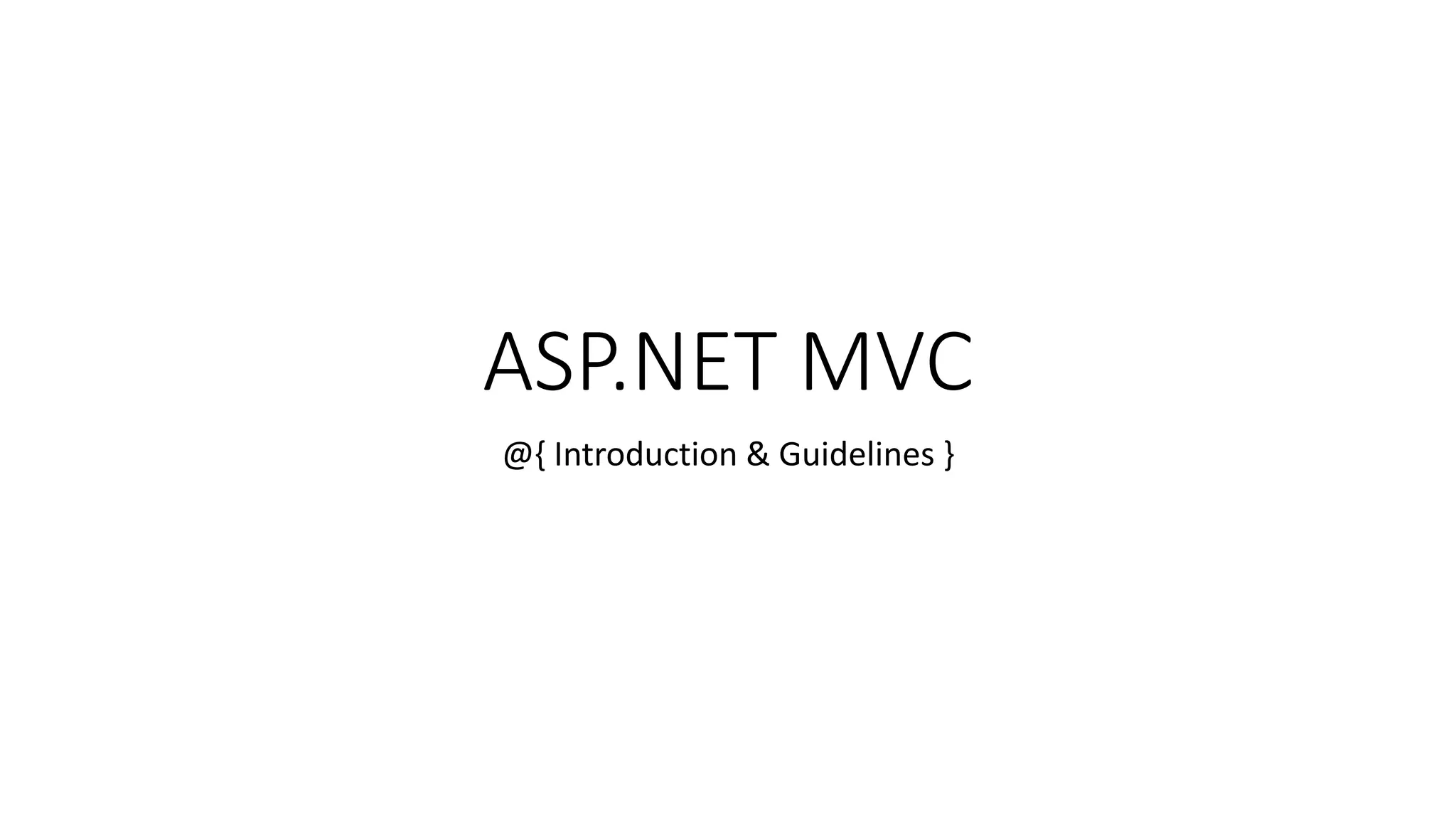
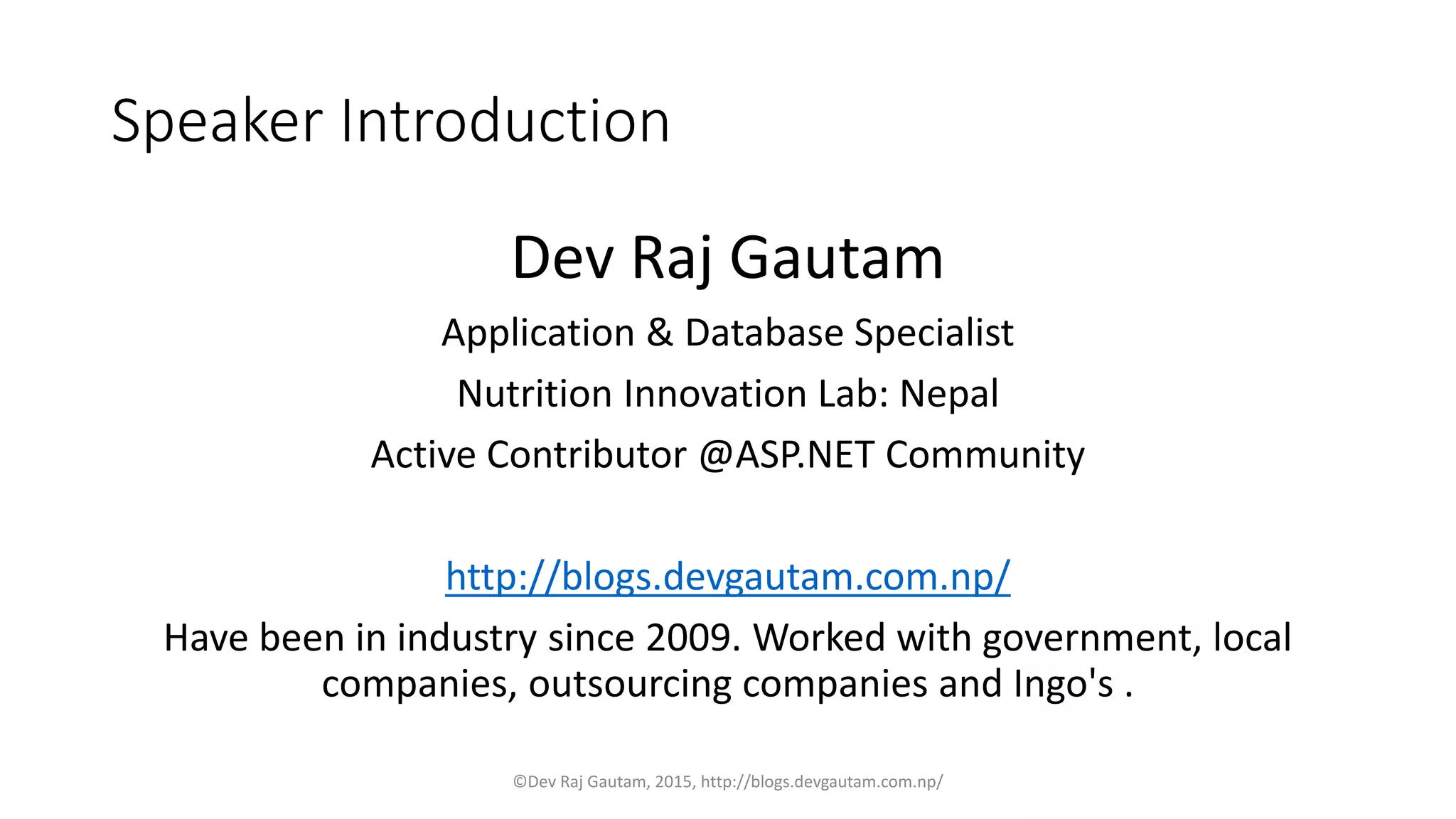
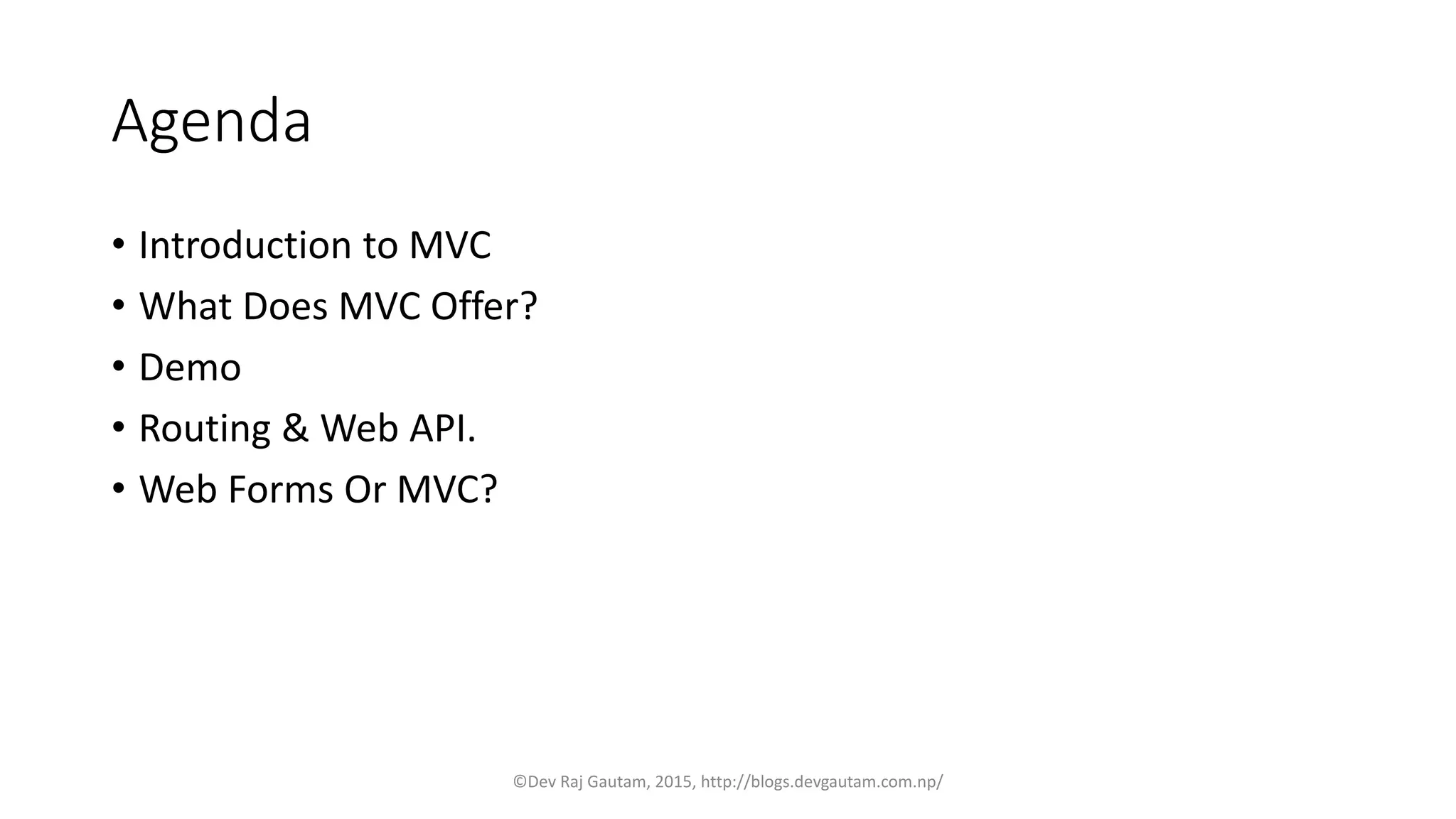
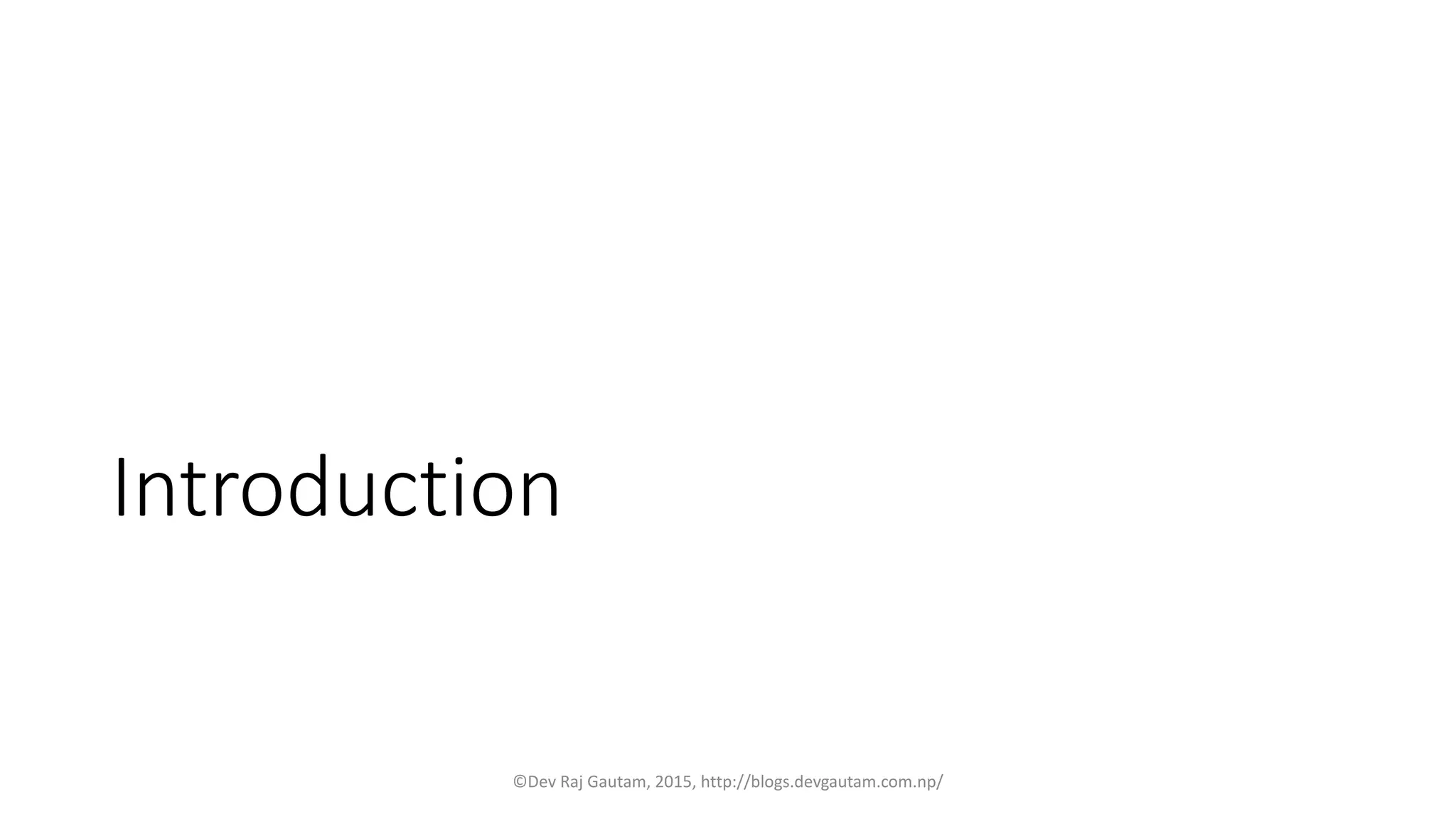
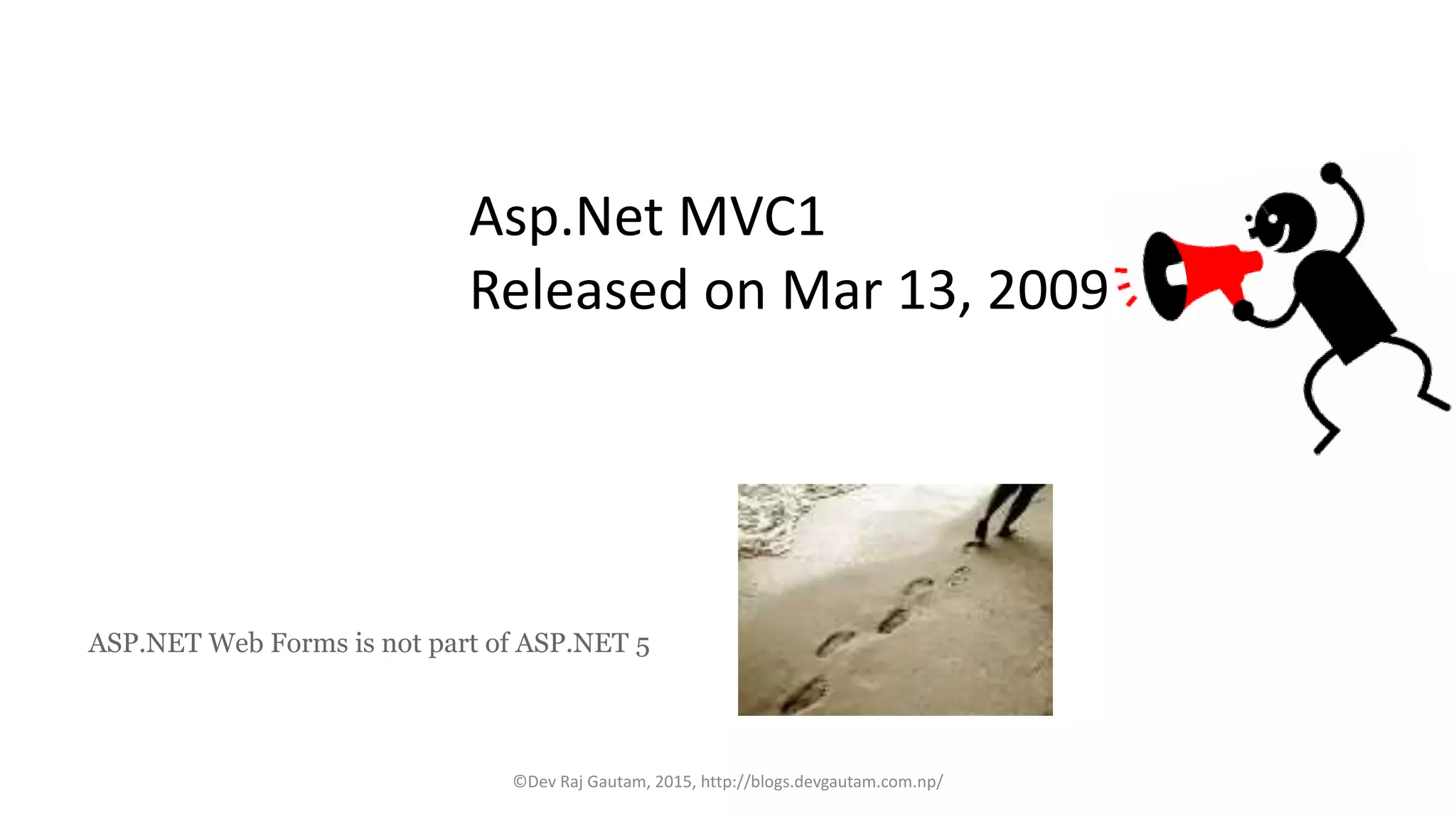
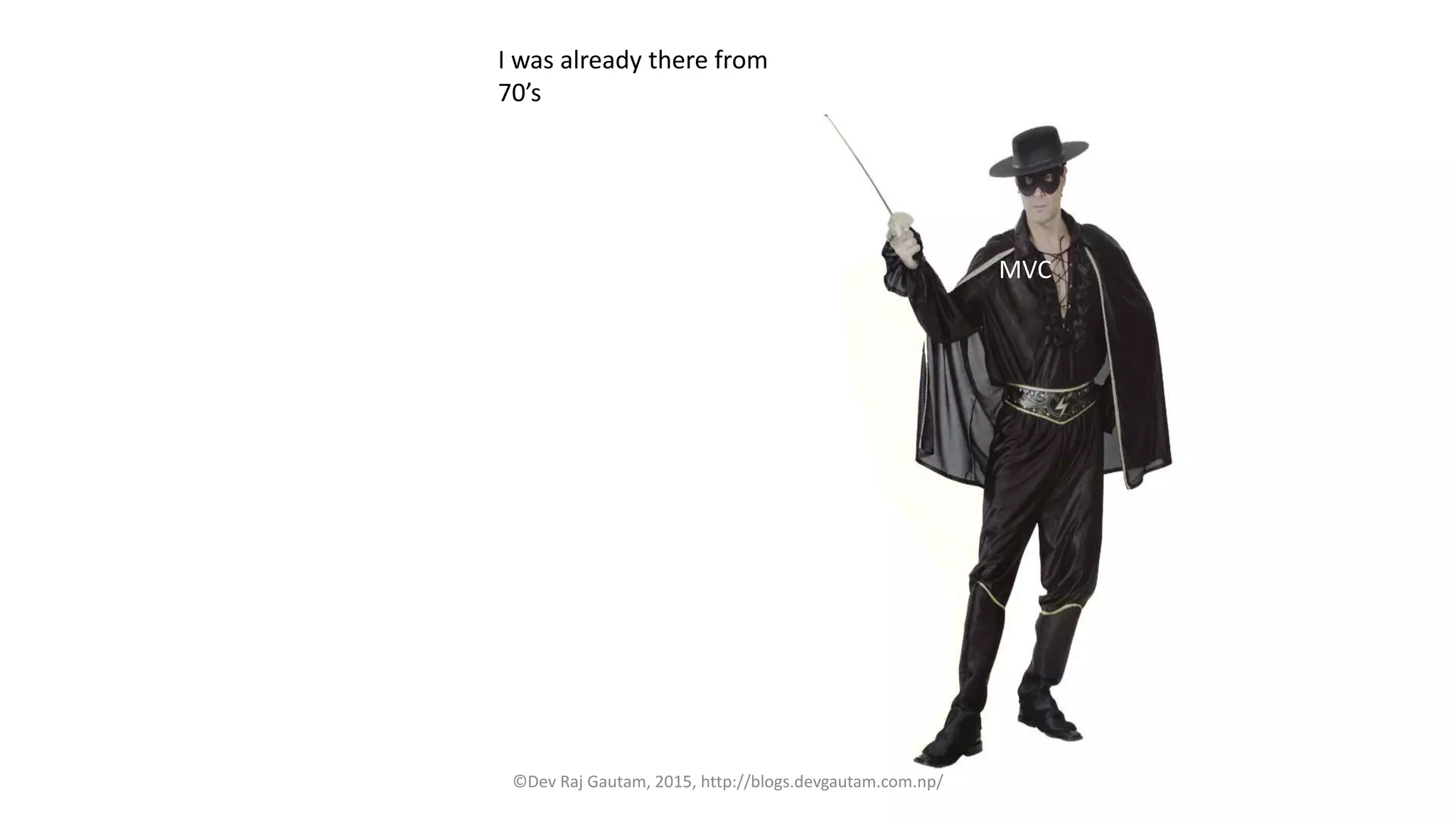
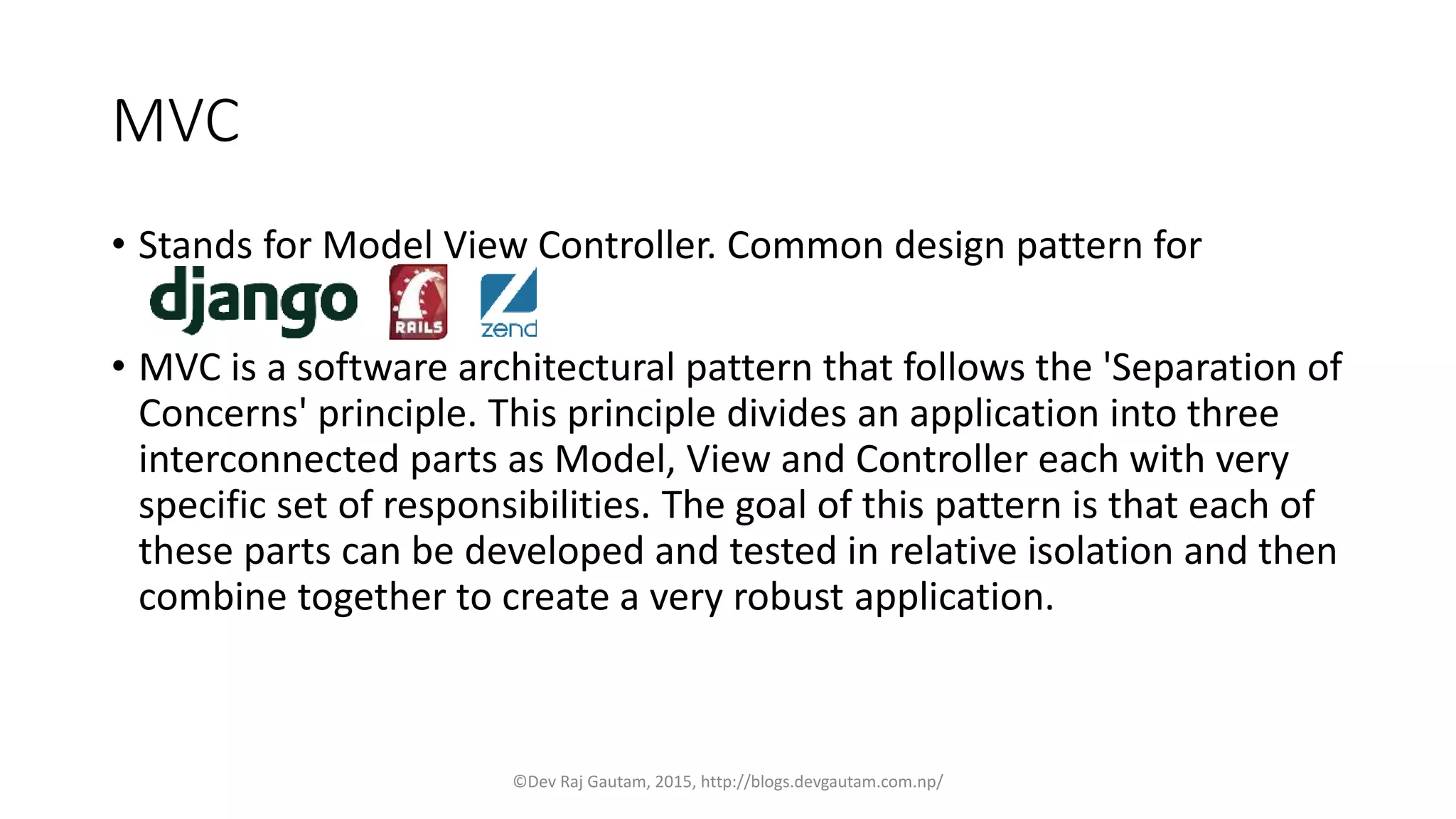

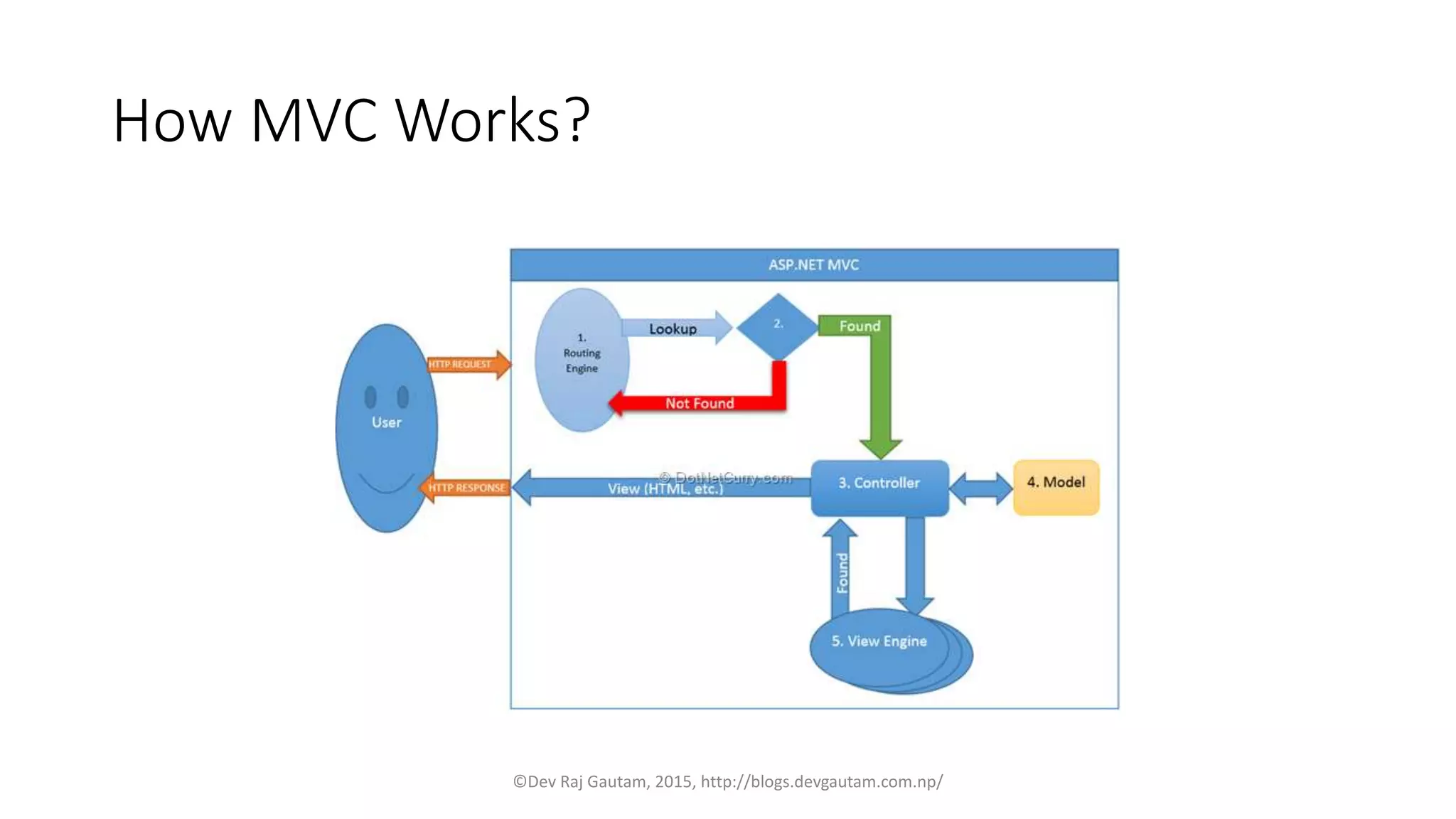
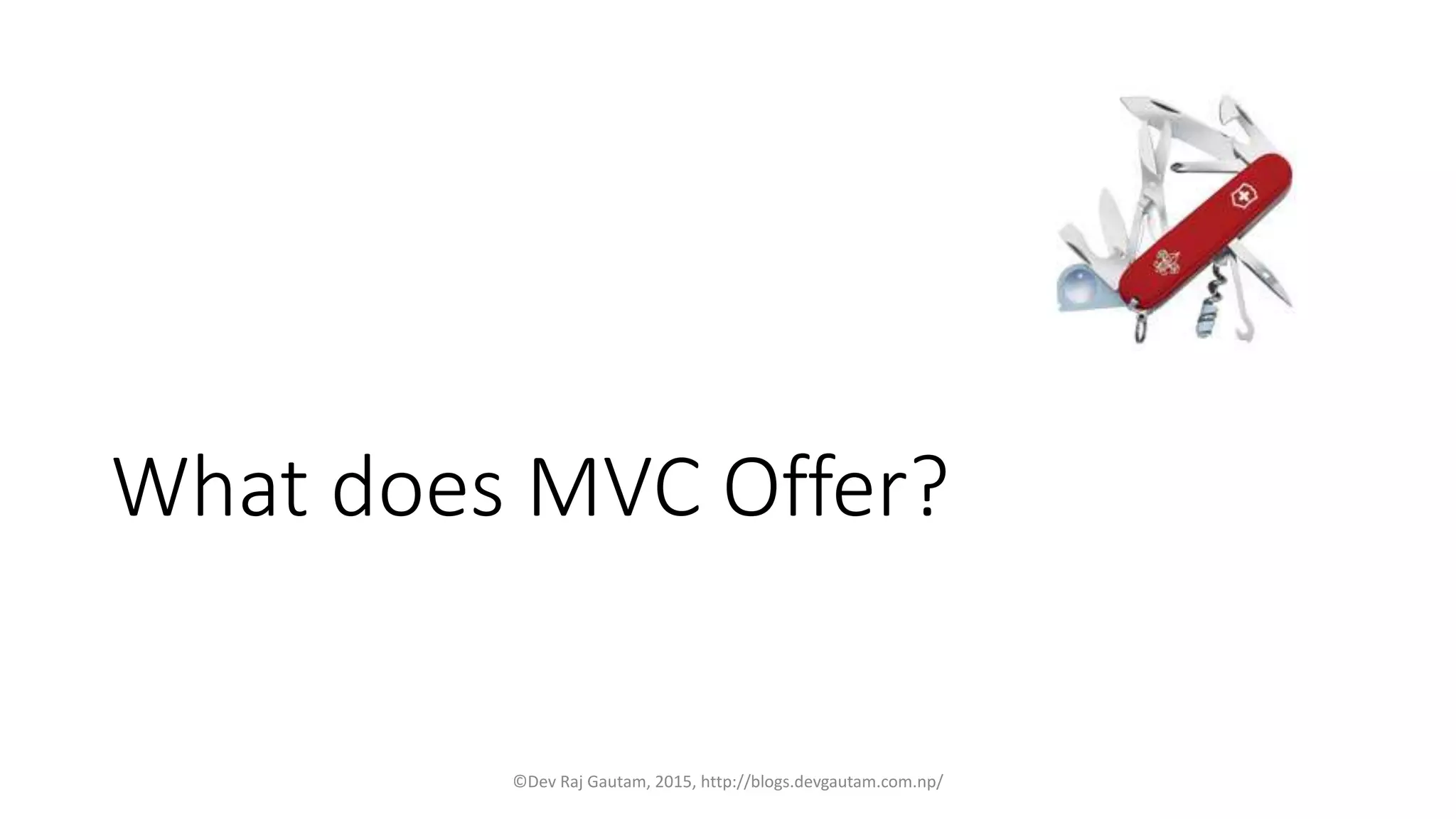
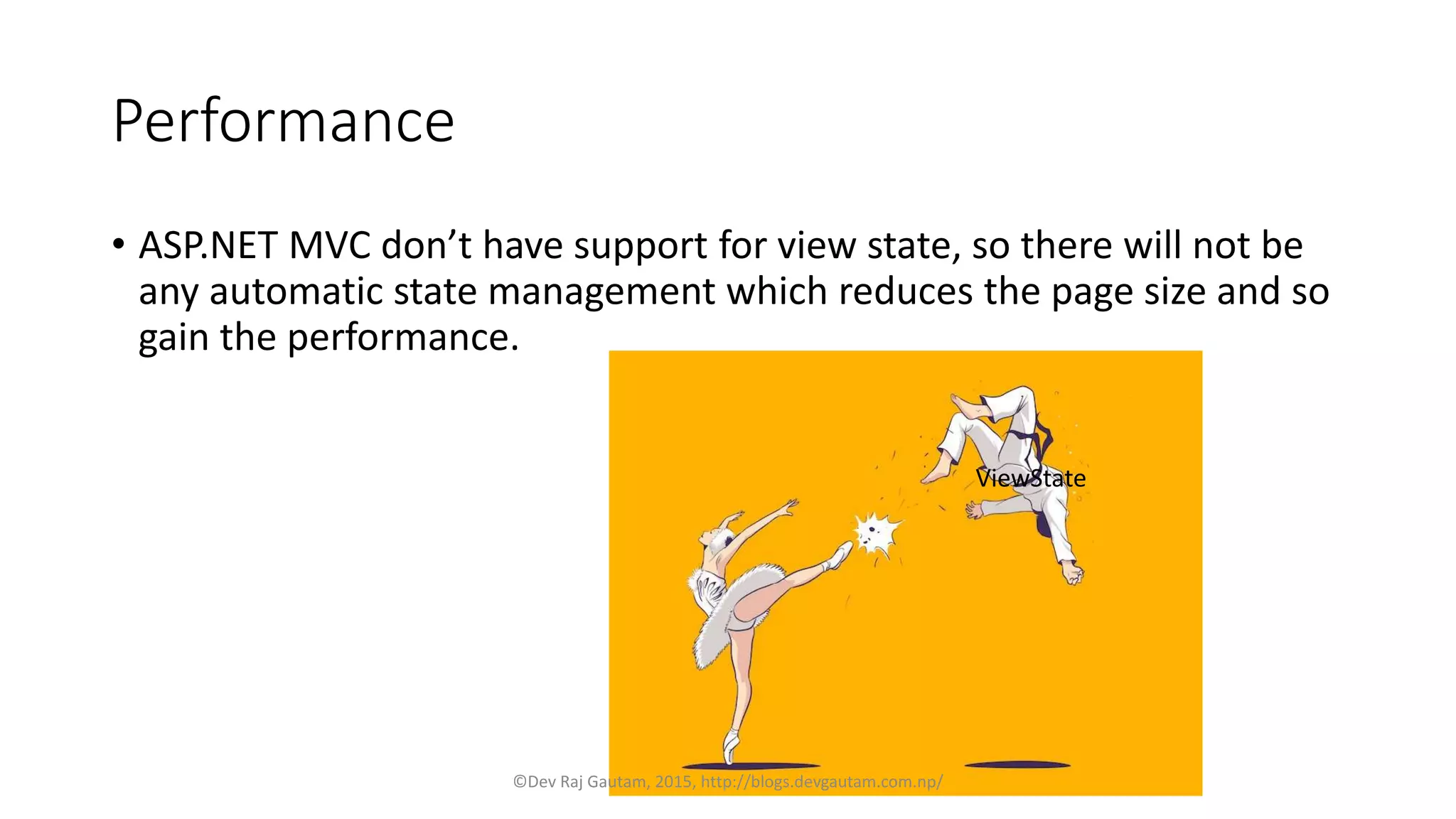
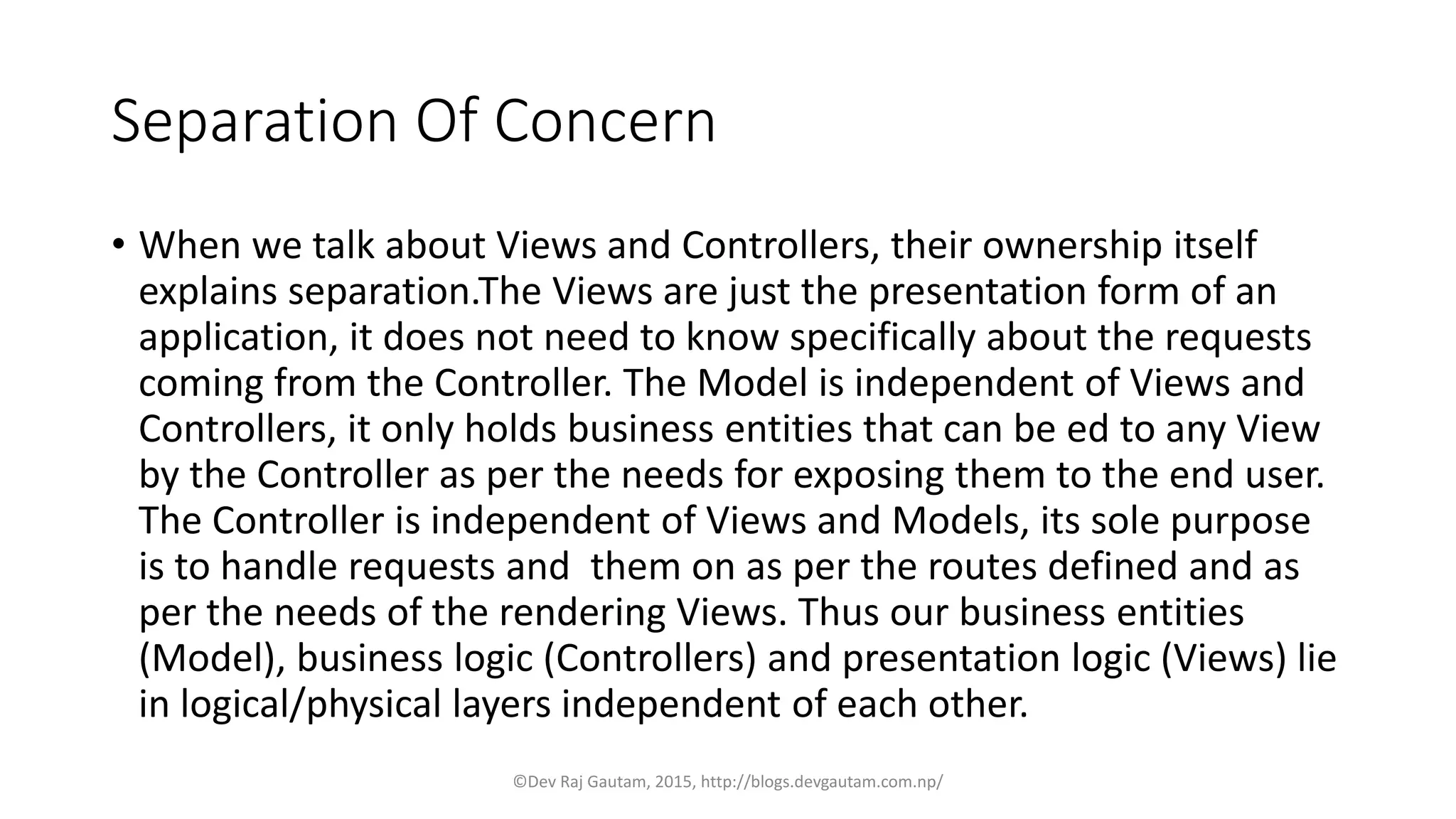

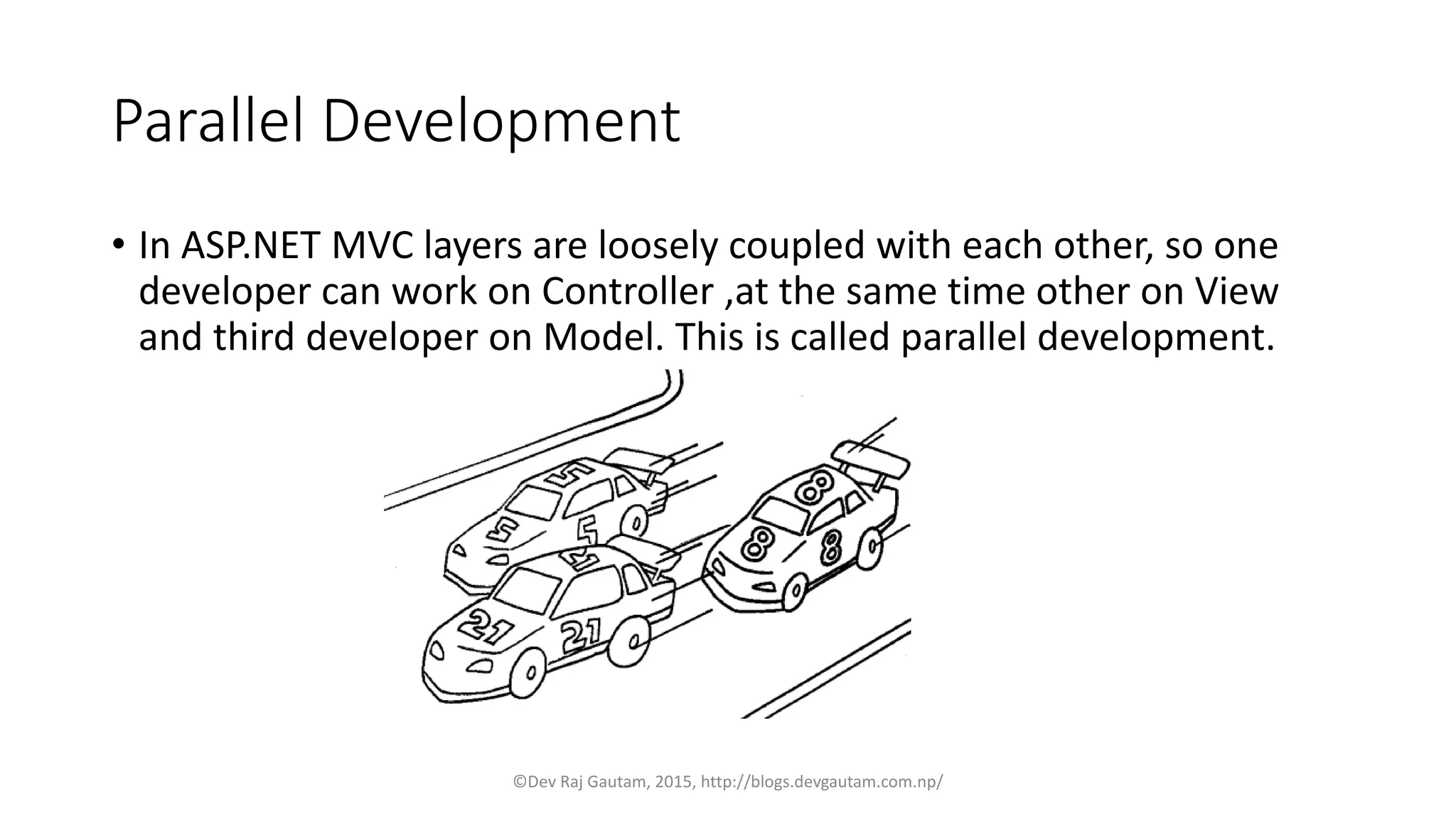

![Testing • Asp.Net webforms is dependent on HttpContext.Current, our pages as part of the HttpApplication executing the request Which makes • These are all easily mockable! • HttpContextBase, HttpResponseBase, HttpRequestBase [TestMethod] public void ShowPostsDisplayPostView() { BlogController controller = new BlogController(…); var result = controller.ShowPost(2) as ViewResult; Assert.IsNotNull(result); Assert.AreEqual(result.ViewData["Message"], "Hello"); } ©Dev Raj Gautam, 2015, http://blogs.devgautam.com.np/](https://image.slidesharecdn.com/asp-150718124241-lva1-app6892/75/ASP-NET-MVC-Introduction-Guidelines-16-2048.jpg)
![Testing • [TestMethod] • public void TestInvalidCredentials() • { • LoginController controller = new LoginController(); • var mock = new Mock<System.Web.Security.MembershipProvider>(); • mock.Expect(m => m.ValidateUser("", "")).Returns(false); • controller.MembershipProviderInstance = mock.Object; • var result = controller.Authenticate("", "") as ViewResult; • Assert.IsNotNull(result); • Assert.AreEqual(result.ViewName, "Index"); • Assert.AreEqual(controller.ViewData["ErrorMessage"], "Invalid credentials! Please verify your username and password."); • } ©Dev Raj Gautam, 2015, http://blogs.devgautam.com.np/](https://image.slidesharecdn.com/asp-150718124241-lva1-app6892/75/ASP-NET-MVC-Introduction-Guidelines-17-2048.jpg)


